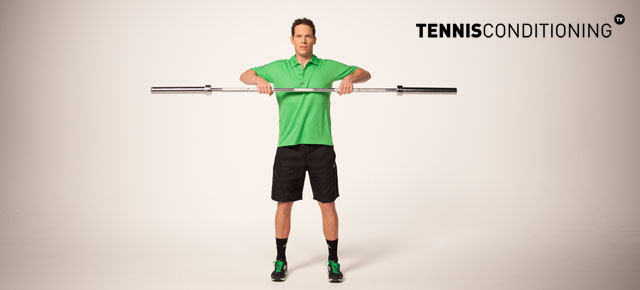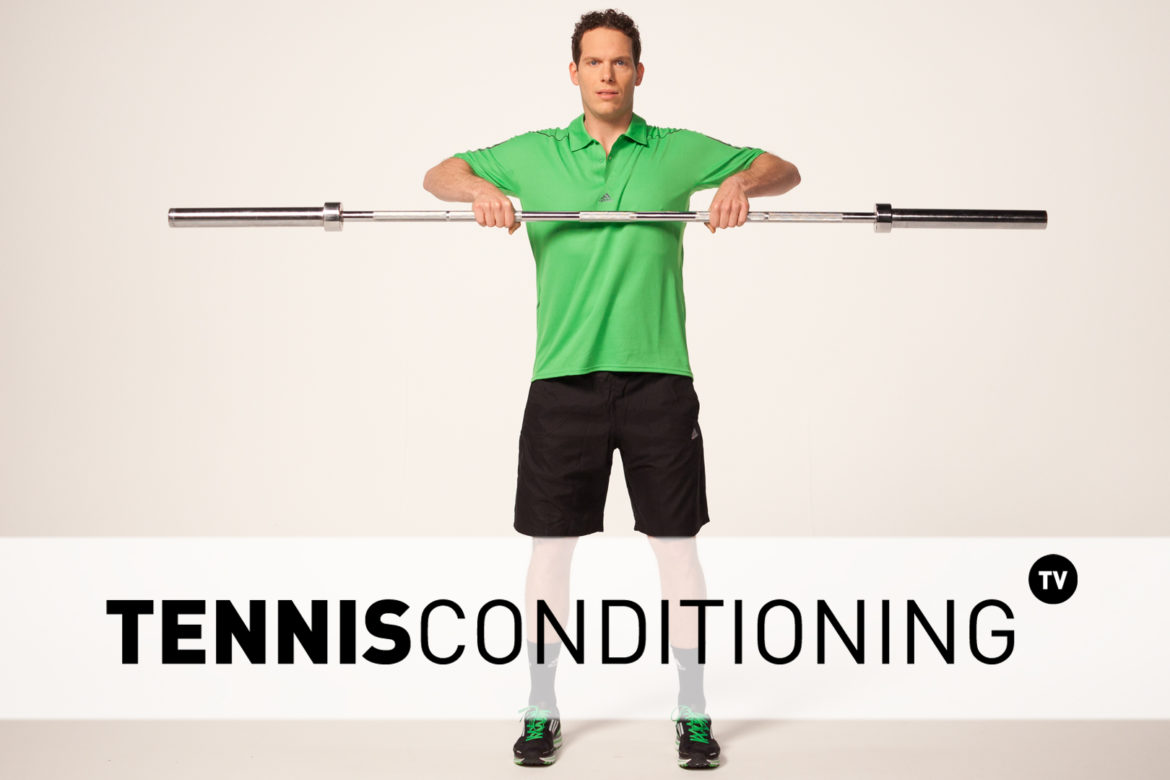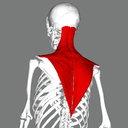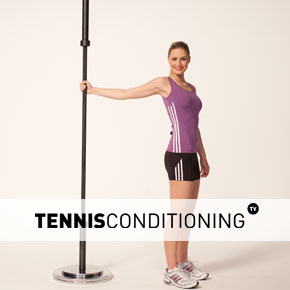The upright row is a compound resistance training exercise to strengthen the shoulder abductors and muscles of the shoulder girdle used during the serve.
The upright row is an essential upper-body exercise because it activates muscles used during the serve and the pulling phase during Olympic lifts.
Thereby improving strength, neuromuscular system efficiency, body control and coordination.
Therefore, we recommend you include the upright row in your preparation- or hypertrophy training phase so you can transition into more complex exercises, such as the High Receive, during later training phases to optimize your athletic abilities and power output.
If you want to become proficient in Olympic weightlifting, use the integrated periodization model for programming.
Learn how to calculate appropriate training phase intensities then download chapter 6: Strength & Conditioning: Resistance Training for Athletes.
Should you have strength imbalances at the shoulder joint then you can perform the upright row using dumbbells or a single-hand grip at the cable machine.
Upright Row Progression
If you use additional weights…make sure you use appropriate resistance so you can control the action throughout the entire range of motion. Otherwise you defeat the purpose of the exercise.
Very often, people use too much resistance and they become sloppy. Especially when it comes to maintaining core stability repetitively.
Also, don’t just progress with adding more weight. First, maximize the speed while maintaining perfect form.
Upright Row Description

- Position barbell hip level on the rack; add resistance (plates) and attach safety clips
- Take an athletic stance; stand straight, feet are shoulder-width apart; knees slightly flexed; toes point forward
- Use a pronated grip (palms facing down) and place hands slightly wider than shoulder-width apart on the bar; wrists remain neutral and are in line with elbows; elbows remain close to the torso; lift barbell off the rack and take a step back
- In athletic stance, adduct scapulae (push shoulder blades together) first, then abduct shoulders to 90˚ and pull barbell upward to xiphoid process of sternum (~ nipple level); barbell remains close to the body; elbows are flexed and at shoulder level; maintain neutral pelvis and spine position; look forward
- Slowly adduct shoulder and extend elbows thereby returning barbell to starting position
Note: Exercise can also be performed with dumbbells!
Upright Row Targeted Musculature
- Rhomboids
- Trapezius
- Deltoids
Training Zone
In this section we provide you with some exercises you can use to optimize your training.
The exercises have been grouped and selected based on the major muscle group(s) they target – the prime movers.
The first exercise is a dynamic warm up to increase muscle tissue temperature to prepare you for your workout.
For more info take a look at the benefits of a proper warm up routine.
The second exercise is a free-weight resistance training exercise to strengthen the respective prime movers and improve neuromuscular system efficiency.
Why? Find out more about the purpose of weightlifting for tennis players.
The third exercise is a static stretching exercise you can do following your workout as a cool down to improve flexibility and reduce muscle soreness.
Here is more information on the benefits of static stretching.







